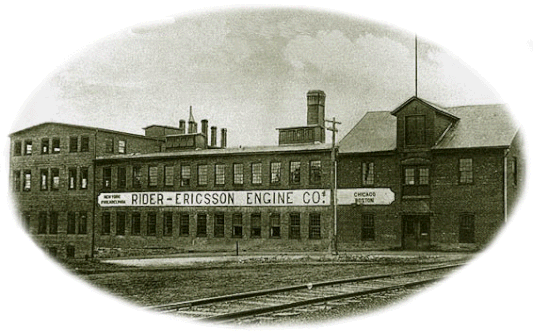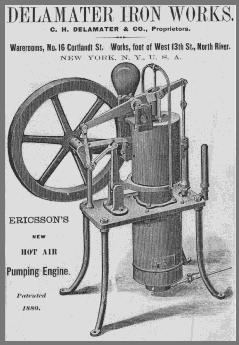- culture des bambous
- planter les bambous
- Bambous en pots
- HAIE DE BAMBOU
- bar BARRIERE ANTI RHIZOME
- L'hypertufa, fabriquer ses propres pots et bacs
- Fixation de Tiges de bambou
- Lanterne de bambou au jardin
- Objets Déco en bambou
- Lucky_bamboo / bouturage et multiplication
- Livres et Articles de références
- Diviser une motte de bambou
- Broyage de bambous
- Fendre du bois - Splitting wood
- Bio Cha
- Tyres gardens - Jardins hors sol en pneus
- Recyclages et jardinage
- Earthship Biotech Geonef
- Walpini - Serre semi enterrée & aquaponie - Undergound Greenhouse & aquaponic
- Le "mouvement des micromaisons" et les "Tiny Houses"
- Yakisugi - Shou sugi ban - 焼き杉
- Mur Végétal & Jardin Vertical - Green Wall - Wall Garden - Vertical Garden Installation & Operation
- Légumes sans eau …sans arrosage... sans irrigation ... Qui résistent aux sécheresses !
- Super culture en lasagnes ... avec coffrage en botte de paille ...
- Compost Templier & Compostage méthode Armand Ell - Composting method Armand Ell
- Compostage méthode Jean Pain production eau chaude et biogaz - Composting method Jean Pain production hot water and biogas
- Planète Océan [FR] Yann Arthus-Bertrand - le film Full HD --- Planet Ocean [UK]- the film by Yann Arthus-Bertrand
- HOME (FR) & (EN) Doc Film - Movie (En 200 000 ans d'existence, l'homme a rompu un équilibre fait de près de 4 milliards d'années d'évolution ... / Catastrophic evolution of the Earth's climate.)
- ISS - International Space Station - Station Spatiale Internationale - Livestream - ISS Tracking Spaceflight
- ISS Docking - Undocking
- ROCKET STOVE - POELE FUSEE - POELE DRAGON - POELE DE MASSE
- Moteur Stirling - Stirling engine
- Moteur Philips MP1002CA Stirling Engine
- Rider-Ericsson Engine Company
- The Fanning Hot Air Engine
- Kromhout M1 hot bulb engine.
- Explications du fonctionnement d'une unité Stirling ... (vidéo)
- Moteur Stirling Alpha
- Moteur Stirling Bêta
- Moteur Stirling évolutions et dérivés
- Documentations sur les moteurs Stirling et applications - PDF
- lE COIN DU ...
Rider-Ericsson Engine Company
Rider-Ericsson Engine Company


Hot Air Water Pumping engine

Rider Ericsson 8 inch
Robinson Patent Hot Air Engine
Smallest Rider Hot Air Engine
The US Rider-Ericsson Engine Company was the successor of the DeLamater Iron Works and the Rider Engine Company, having bought from both companies their extensive plants and entire stocks of engines and patterns, covering all styles of Rider and Ericsson hot air pumping engines brought out by both of the old companies since 1844, excepting the original Ericsson engine, the patterns of which were burned in the DeLameter fire of 1888.

Delamater Hot air engine

Engines
The company specialized in hot air pumping engines. A hot air engine is an external combustion engine. All hot air engines consist of a hot side and a cold side. Mechanical energy is derived from a hot air engine as air is repeatedly heated and cooled, expanding and contracting, and imparting pressure upon a reciprocating piston.
Early hot air engines
In his patent of 1759, Henry Wood was the first to document the powering an engine by the changing volume of air as it changed temperature. George Cayley was the first to build a working model in 1807. The Reverend Robert Stirling is generally credited with the "invention" of the hot air engine in 1816 for his development of a "regenerator" which conserves heat energy as the air moves between the hot and cold sides of the engine. Technically, not all hot air engines utilize regenerators, but the term hot air engine and Stirling engine are sometimes used interchangeably.
Rider's engine
The Rider style engine is an "alpha" engine which uses two separate cylinders. As air in the hot side cylinder heats, it expands, driving the piston upward. The crankshaft now moves the cold side piston upward, drawing the hot air over to the cold side. The air cools, contracts, and pulls the hot side piston downward. The cold side piston then pushes the cool air over to the hot side, and the cycle repeats.

Ericsson's engine
The Ericsson style engine is a "beta" engine, which contains both the power piston and displacer within one cylinder. The cylinder has a hot end, within the firebox, and a cold end, surrounded by a water jacket. As the air is heated within the cylinder, the air expands, driving the piston upward. The displacer next moves downward, pushing the air from the hot side into the cool side of the cylinder. The air then contracts, pulling the piston downward. The displacer then moves the air from the cool side to the hot side, the cycle begins again.
Gary Eastin Showing Ericsson Hot Air Pumping-engine
Wiggers stirling Rider Ericsson HV-87-400 review
Rider Ericsson Hot Air Pumping Engine- 1/4 Scale
Hot Air Engines WMNSTR, Rollag, MN 2015
1898 HOT AIR ENGINE


Ce site vous à intéressé ?
Vous avez trouvez l'information que vous cherchiez dessus ?
Ce site vous à intéressé ?
Merci de le soutenir, si vous désirez le voir se développer !
Nous mettons cette première pub ... à votre disposition !
Si vous passez des commandes sur Amazon, Merci de passer par ce lien ( ou les liens prévus à cet effets dans les pages du site ...) en cliquant dessus .. tout simplement...
Nous serons rémunéré par Amazon grâce à Vous .... !
(entre 1 à 7% en moyenne ...)
Merci d'avance pour votre collaboration et votre soutient.
Du 18 au 28 Nov 2018
E x t r a Promotions
Merci, de votre soutient !
N'hésitez pas à profitez des offres d'essais des services Amazon, Elle sont toutes gratuites, et vous pouvez les arrêter, simplement en clic, avant "leur fin", si vous n'êtes pas satisfait ! Et si vous êtes satisfait et intéressé, ne faites rien, votre abonnement commencera tout simplement après la période d'essai ... Et vous pourrez à tout moment y mettre fin, par simple clic, il n'y a aucun engagement de durée minimale, ou autres, etc ... vous pouvez annuler à tout moment votre/vos abonnement/s !
Profitez de cette offre promotionnelle d'essai de 30 jours gratuit !
Et pour l'achat d'un équipement "Amazon Echo - Alexia" (Echo, Echo Plus, Echo Dot, Echo Spot ...) profitez de 2 moins complémentaire !

Déplacer le curseur vertical (haut-bas) sur le côté droit de notre "widget moteur de recherche" ci dessous, pour voir tous les produits ... Vous pouvez aussi reformuler la recherche avec d'autres "mots clés" pour relancer une nouvelle recherche !
Profitez de cette offre promotionnelle d'essai ...
1er Livre Audio Gratuit !
Profitez de cette offre promotionnelle d'essai ...
1er Livre Audio Gratuit !
Profitez de ces promotions exceptionnelles :
Promos routeurs 4G LTE - Fixes et mobiles :
par exemple : TP Link 4G LTE : 33% réduction !
( vendu et expédié par Amazon )

Global connect
Day connect
Tag Cloud
tag cloud : bambou bamboo bambu bambuseae poaceae fargesia phyllostachys graminacée graminée chaume turion rhizome pachymorphe leptomorphe cespiteux traçant racine adventive stalk stubble rhizome pachymorphe leptomorphe cespiteux plotting adventitious root grass
rocketstove rocket stove poêle fusée poêle dragon poêle de masse pellet Oligostachyum Fargesia Drepanostachyum Chimonobambusa Brachystachyum Borinda Ochlandra Olmeca Otatea Oxytenanthera Phyllostachys Pleioblastus Semiarundinaria Chusquea Pseudosasa Rhipidocladum Sasa Shibataea Thamnocalamus Yushania
Espèces incluses GRIN, 2014 P. angusta, P. arcana, P. aurea, P. aureosulcata, P. bambusoides, P. bissetii, P. dulcis, P. edulis, P. elegans, P. flexuosa, P. glauca, P. heteroclada, P. humilis, P. incarnata, P. iridescens, P. kwangsiensis, P. makinoi, P. mannii, P. meyeri, P. nana, P. nidularia, P. nigra, P. nuda, P. parvifolia, P. platyglossa, P. prominens, P. propinqua, P. purpurata, P. rubromarginata, P. sulphurea, P. violascens, P. viridiglaucescens, P. vivax, P. yunhoensis
Espèces incluses Kew Gardens World Checklist 2014 P. acuta, P. angusta, P. arcana, P. atrovaginata, P. aurea, P. aureosulcata, P. bissetii, P. carnea, P. circumpilis, P. dulcis, P. edulis, P. elegans, P. fimbriligula, P. flexuosa, P. glabrata, P. glauca, P. guizhouensis, P. heteroclada, P. incarnata, P. iridescens, P. kwangsiensis, P. lofushanensis, P. makinoi, P. mannii, P. meyeri, P. nidularia, P. nigella, P. nigra, P. nuda, P. parvifolia, P. platyglossa, P. prominens, P. propinqua, P. reticulata, P. rivalis, P. robustiramea, P. rubicunda, P. rubromarginata, P. rutila, P. shuchengensis, P. stimulosa, P. sulphurea, P. tianmuensis, P. varioauriculata, P. veitchiana, P. verrucosa, P. violascens, P. virella, P. viridiglaucescens, P. vivax, P. yunhoensis
Espèces incluses The Plant List 2014 P. acuta, P. angusta, P. arcana, P. atrovaginata, P. aurea, P. aureosulcata, P. bambusoides, P. bissetii, P. carnea, P. circumpilis, P. dulcis, P. edulis, P. elegans, P. fimbriligula, P. flexuosa, P. glabrata, P. glauca, P. guizhouensis, P. heteroclada, P. incarnata, P. iridescens, P. kwangsiensis, P. lofushanensis, P. makinoi, P. mannii, P. meyeri, P. nidularia, P. nigella, P. nigra, P. nuda, P. parvifolia, P. platyglossa, P. prominens, P. propinqua, P. rivalis, P. robustiramea, P. rubicunda, P. rubromarginata, P. rutila, P. shuchengensis, P. stimulosa, P. sulphurea, P. tianmuensis, P. varioauriculata, P. veitchiana, P. verrucosa, P. violascens, P. virella, P. viridiglaucescens, P. vivax, P. yunhoensis
Espèces incluses Tropicos 2014 P. acuta, P. altiligulata, P. angusta, P. arcana, P. aristata, P. assamica, P. atrovaginata, P. aurata, P. aurea, P. aureosulcata, P. aurita, P. bambusoides, P. bawa, P. bissetii, P. boryana, P. breviligula, P. cantoniensis, P. carnea, P. castillonis, P. cerata, P. chlorina, P. circumpilis, P. compressus, P. concava, P. congesta, P. decora, P. dubia, P. dulcis, P. edulis, P. elegans, P. erecta, P. faberi, P. fastuosa, P. fauriei, P. filifera, P. fimbriligula, P. flexuosa, P. formosana, P. fulva, P. glabrata, P. glauca, P. guizhouensis, P. helva, P. henonis, P. henryi, P. heteroclada, P. heterocycla, P. heterotricha, P. hispida, P. incarnata, P. iridescens, P. kumasaca, P. kwangsiensis, P. laevifolia, P. lithophila, P. lofushanensis, P. makinoi, P. mannii, P. marliacea, P. marmorea, P. maudiae, P. mazelii, P. megastachya, P. meyeri, P. mitis, P. montana, P. nana, P. nevinii, P. nidularia, P. nigella, P. nigra, P. nigripes, P. nigrivagina, P. nigro-punctata, P. nuda, P. parvifolia, P. pekinensis, P. pierreana, P. pinyanensis, P. platyglossa, P. praecox, P. primotina, P. prominens, P. propinqua, P. puberula, P. pubescens, P. pumilus, P. purpurata, P. purpureomaculata, P. quadrangularis, P. quilioi, P. quizhouensis, P. reticulata, P. retusa, P. rigida, P. rivalis, P. robustiramea, P. rubicunda, P. rubromarginata, P. ruscifolia, P. rutila, P. sapida, P. sedan, P. shuchengensis, P. simonsonii, P. stauntonii, P. stimulosa, P. striata, P. subulata, P. sulphurea, P. tianmuensis, P. tranquillans, P. tubaeformiis, P. varioauriculata, P. veitchiana, P. verrucosa, P. villosa, P. violascens, P. virella, P. viridiglaucescens, P. viridis, P. vivax, P. yunhoensis



